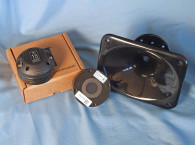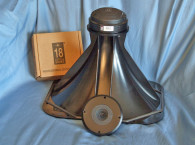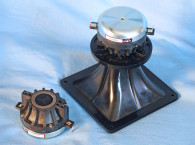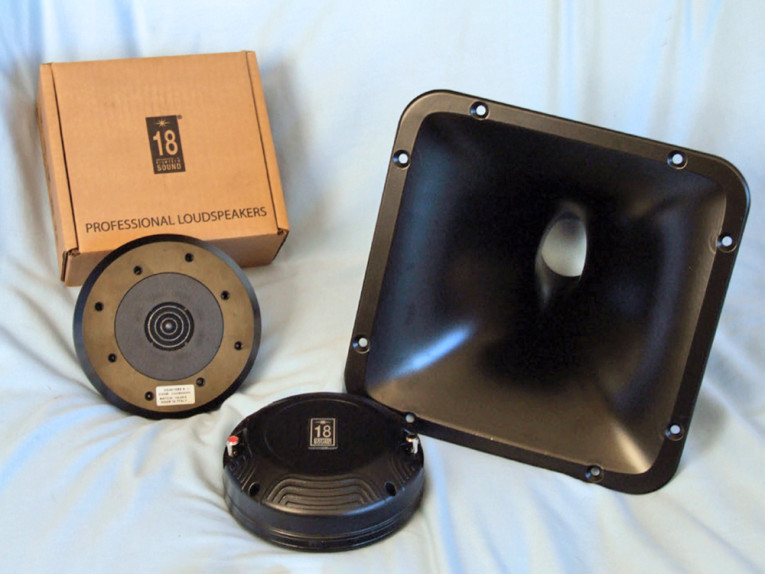

In terms of features, the ND4015BE has a 2” exit, a 4”-diameter edge-wound aluminum voice coil on a nonconducting Nomex former, a 4" pure beryllium diaphragm with a polymer surround, a copper-plated pole piece (shorting ring), a high-precision diaphragm centering system, and a boundary element method (BEM) optimized four-slot phase plug. The neodymium ring magnet, top plate, and bottom plate, plus the color-coded push terminals have a corrosion-resistant epoxy coating. For thermal dissipation, the entire motor structure is thermally coupled to the black aluminum top cover.
The XR2064 horn that Eighteen Sound provided with the ND4015BE is a 2" entrance horn constructed of pressure-injected aluminum and painted black. As with all cast metal horns, it is capable of reducing the steady-state driver’s working temperature at full power by up to 30°C, which increases the compression driver’s power handling. The coverage pattern for this constant directivity horn is 60° × 40°.
I used the LinearX LMS analyzer to produce the 200-point stepped sine wave impedance plot shown in Figure 1, with and without the horn. The solid black curve represents the ND4015BE mounted on the XR2064 horn. The dashed blue curve represents the compression driver without the horn. With a 3.9-Ω DCR, the ND4015BE/XR2064 combination’s minimum impedance was 5.7 Ω at 1.55 kHz.

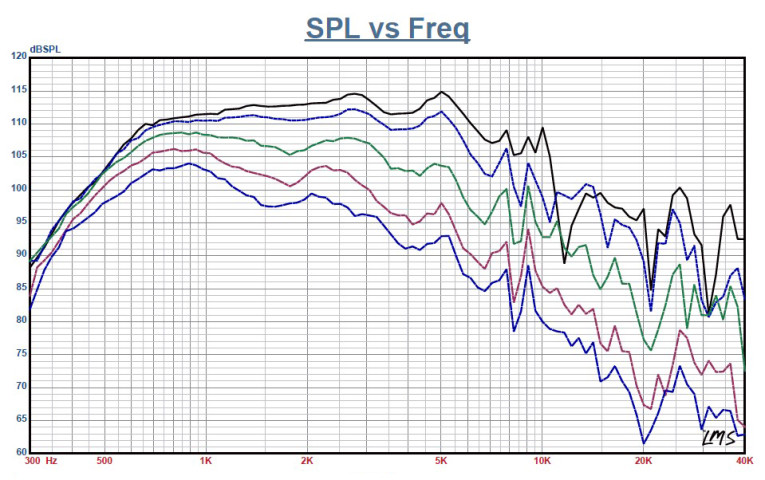

off-axis frequency response (0° = solid; 15° = dot; 30° = dash; 45° = dash/dot; 60° = dash).
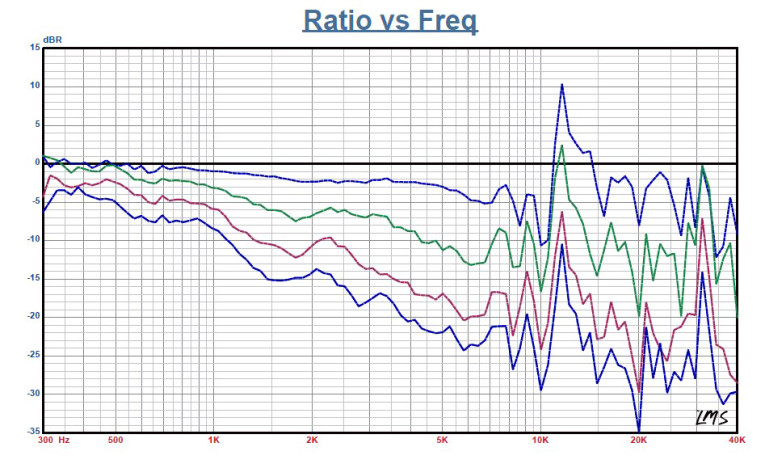
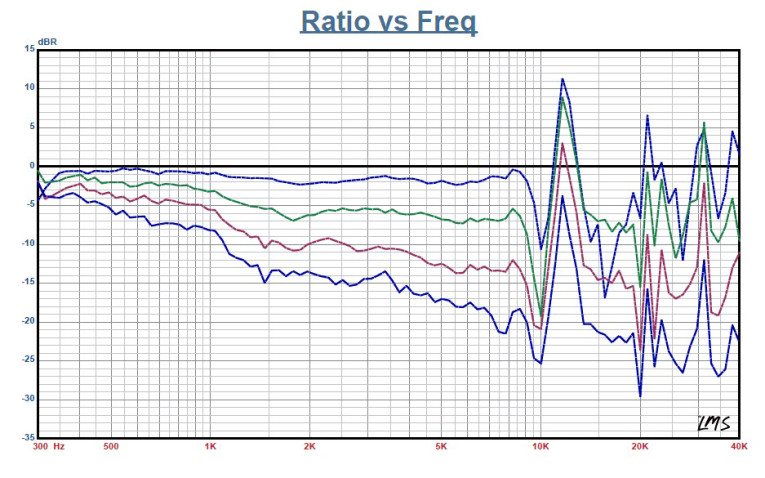
For the next group of frequency response tests, I recess mounted the ND4015BE/XR2064 combination in an enclosure with a 10” × 15” baffle. Then, I used a 100-point gated sine wave sweep to measure the horizontal and vertical on- and off-axis at 2.83 V/1m. Figure 2 shows the compression driver/horn combination’s on axis. The SPL profile measures ±2 dB from 1 to 6 kHz, before beginning its second low-pass rolloff at 5 kHz. The ND4015BE’s recommended crossover frequency is a minimum of 900 Hz with a fourth-order LR network. In terms of the on- and off-axis response, the horizontal results at 0°, 15°, 30°, 45°, and 60° are shown in Figure 3. Figure 4 shows the vertical on- and off-axis results.
Figure 5 and Figure 6 show the plots with the off-axis normalized to the on-axis response for Figure 3 and Figure 4, respectively. Figure 7 shows the two-sample SPL comparison, and both samples are closely matched.


For the remaining series tests, I used the Listen AmpConnect ISC analyzer and the 0.25” SCM microphone to measure distortion and generate time-frequency plots. For the distortion measurement, I mounted the ND4015BE/XR2064 combination with the same baffle I used for the frequency response measurements. I used a pink noise stimulus to set the SPL to 104 dB at 1 m (1.93 V). I placed the Listen microphone 10 cm from the horn’s mouth to measure.
Figure 8 shows the distortion curves. Then, I used SoundCheck to get a 2.83-V/1-m impulse response and imported the data into Listen’s SoundMap time-frequency software. Figure 9 shows the resulting CSD waterfall plot. Figure 10 shows the short-time Fourier transform (STFT) plot.


This is an amazing new flagship compression driver for Eighteen Sound. With a $2,258 list price, I suspect this compression driver will find its way into very high-end theater speakers and PA systems, where detail and timber at high volume levels is essential. Beryllium has an outstanding sound quality and excels at detail and definition, so making a compression driver diaphragm from this material has been highly successful (e.g., the JBL 435Be or the TAD TD-1401). VC
www.eighteensound.com
This article was originally published in Voice Coil, February 2014




